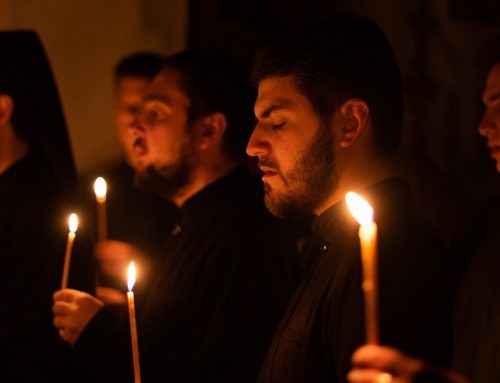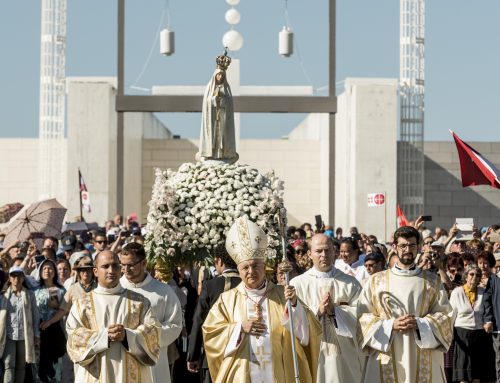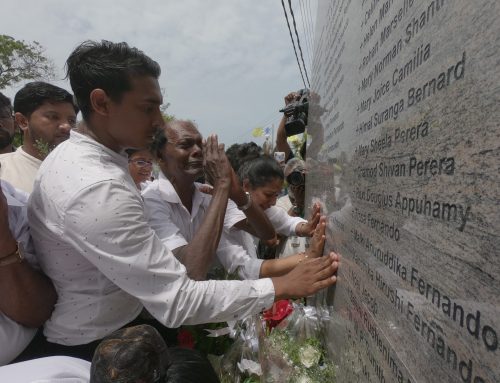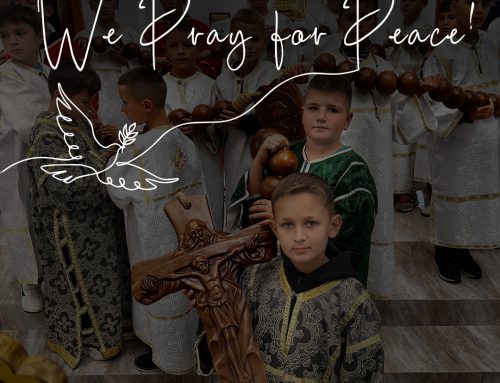SYRIA
“Holy Week is our life: passion, death and resurrection”
In Homs and the Valley of Christians, they are preparing to live through the most important days for those who have been baptised, which give meaning to their presence in the country today.
On Friday, the feast of Our Lady of Sorrows, in the Syrian-Catholic Cathedral of the Holy Spirit of Homs, shortly before five in the afternoon groups of women, some young people and several families begin to arrive. Many of them, especially the older ones, are dressed in black. “During Lent and Holy Week we go to church dressed like that,” says Christine Arwash, a parishioner.
Then the Way of the Cross begins, a very important prayer for the Christians of Syria and the Middle East. “This prayer is a tradition for us,” says the young Hamer Mussa, “that’s why we come every day during Lent, especially every Friday, to pray together.” The priest presides over the service, a deacon carries a large wooden cross painted black and three acolytes carry candles. They stop at every Station of the Cross around the church.
After the Gospel readings, they pray the Our Father and the Hail Mary in Arabic and in Syriac, the liturgical language of the Syrian-Catholic rite. The church still shows the marks of the war that has been especially harsh on the Christian minority of Syria. The painting that presides over the church, an image that represents the scene of Pentecost, is completely cracked. Several areas of the roof are freshly painted, highlighting the places where mortars fell. Some images of the Stations of the Cross are missing, destroyed or stolen during the years of heavy fighting in the Old City of Homs.
“The Way of the Cross prayer is very important for us because it accompanies us in our suffering,” says another parishioner. The parish priest, Fr Kassab, at the end of the prayer acknowledges: “Holy Week is a reflection of our life: passion, death and resurrection. Christians have suffered and we are suffering a lot because of the war in Syria. Some have died from the attacks, others have been killed for our faith. Now we are trying to recover hope and we look forward to Jesus being resurrected. “
Among the attendees, all have experienced great suffering in their lives: they have lost family members, others are going through illnesses and operations, young people have an uncertain future. The wounds of Jesus on Calvary are visible in their flesh; others are like the Veronica or Simon of Cyrene, who continue to carry the cross of Christ today.
A similar scene is replayed in the Greek-Catholic church of San Pedro, in the town of Marmarita at the heart of the Valley of Christians, a region of Syria near the border with Lebanon where there are thousands of displaced people from other parts of the country where the fighting is intensifying: Aleppo, Damascus or Idlib. “In our simple parish we are serving 2,000 people each month. Thanks to the help received from the Pontifical Foundation Aid to the Church in Need, we can pay the rent of many displaced people, offer them clothes, food, medicines and the medical treatment they need for cancer or a heart problem, ” says Fr Walid Iskandafy.
“We pray vespers every day of Lent at half past four. Approximately 50 people come. Psalms are sung, some in Greek and others in Arabic. ” When it ends, a group of women and men remain behind to rehearse hymns for the Mass and prepare the celebrations for Holy Week.
The church is full of icons, including Saint Teresa of Jesus, the Spanish mystic saint. In the iconostasis, a wooden ornamental screen that separates the altar from the rest of the central nave, the image of the Virgin Mary occupies a privileged place: “Mary is our hope. She who lived the Passion with her son is with us every day that our suffering continues here. Many people tell me that they have experienced the consoling presence of Mary in recent years,” says Father Walid.
The Ghassan family is one that has witnessed this consoling love of God through Mary and the Church in Syria. “We fled Homs because of the war. One day our 25-year-old son Michel was in the living room of our house when suddenly a stray bullet went through his head. He died instantly, ” his mother, Maha Sanna, tells us. “We came to the Valley of Christians. We are living in a rented apartment that the Church pays for. If it were not for that, I do not know where we would be.” Her home is located in the neighboring town of Nashra, which literally means “Nazarene” in Arabic. Today there are still thousands of Nazarenes like the Ghassan family, who in Syria and in many other parts of the world, carry their crosses before front of the indifferent gaze of others.
“We thank so many people who are supporting us, through organisations like Aid to the Church in Need. We are alive thanks to them, ” says Ghassan Abboud, the head of the family. “We know we are not alone. We pray for you and please, never stop praying for us. May you have happy a Easter, may the Risen Jesus fill you with blessings. “





